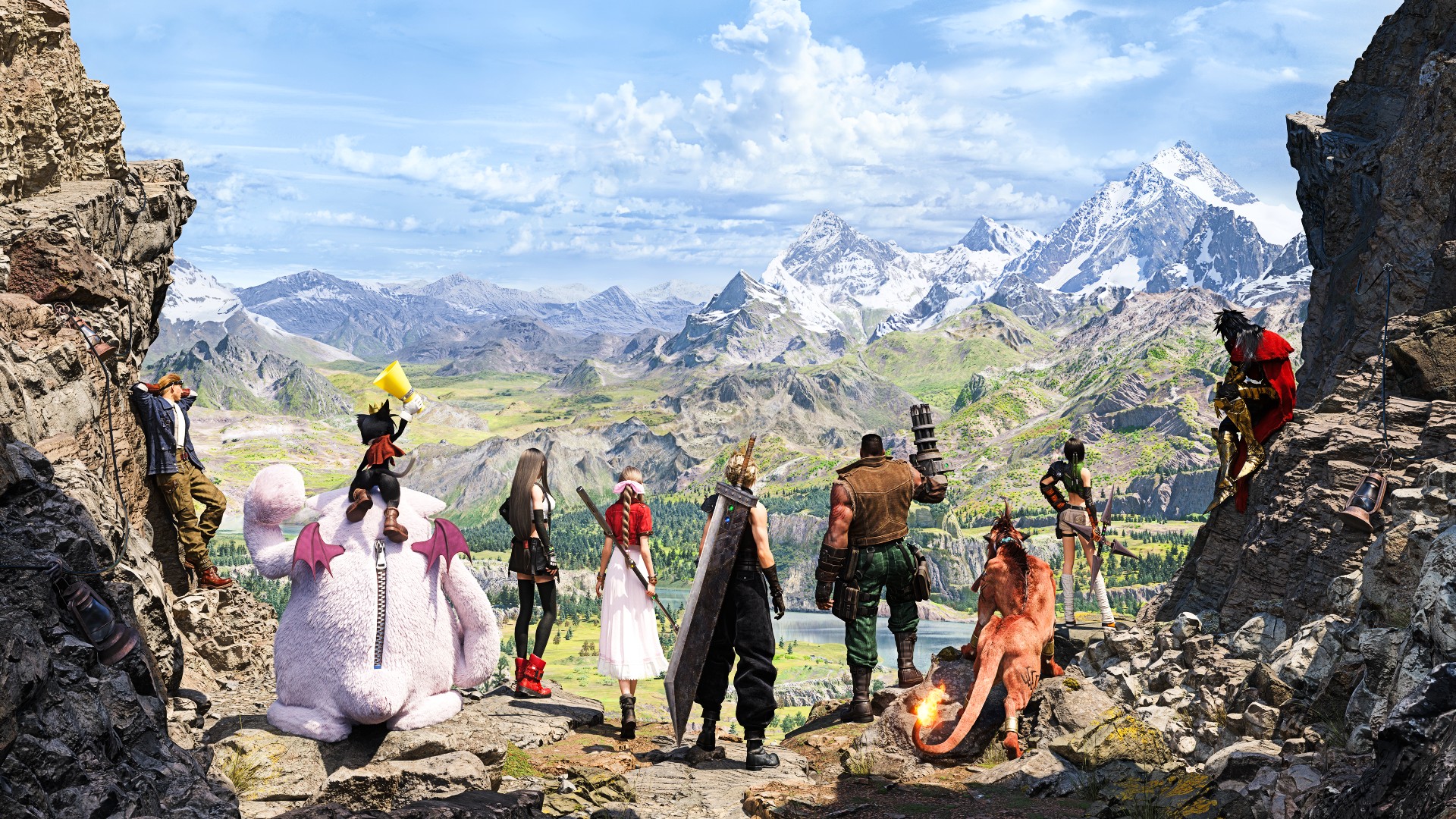
If Final Fantasy 7 Remake gave Midgar the scale and attention it deserved, Final Fantasy 7 Rebirth goes a step further to capture and elevate the feeling of leaving the dystopian city behind for the open planes of The Planet. Developer Square Enix's approach to open-zone design sees back-story, quest variety, and gorgeous visuals coalesce into an adventure with dear friends led by pure wanderlust. The key to many great Final Fantasy games is the company you keep, and Rebirth elevates the original's step-out moment by putting your party at the front of its thinking as it builds upon the foundations of its predecessor.
Release date: February 29, 2024
Platform: PS5
Developer: In-house
Publisher: Square Enix
Legacy continues to cast a long shadow over the remake trilogy. If you think back to the original 1997 adventure, we're now playing through its middle section – weaving through plenty of cherished moments of RPG history. The format of turning one game into three throws up plenty of narrative challenges here as we move into position for Act 3, and not every beloved story beat benefits from being revisited. Still, Final Fantasy 7 Rebirth largely overcomes the bumps in the road by ensuring the journey is guided by the original's quirky charm as we go bigger and better.
Things we lost in the fire
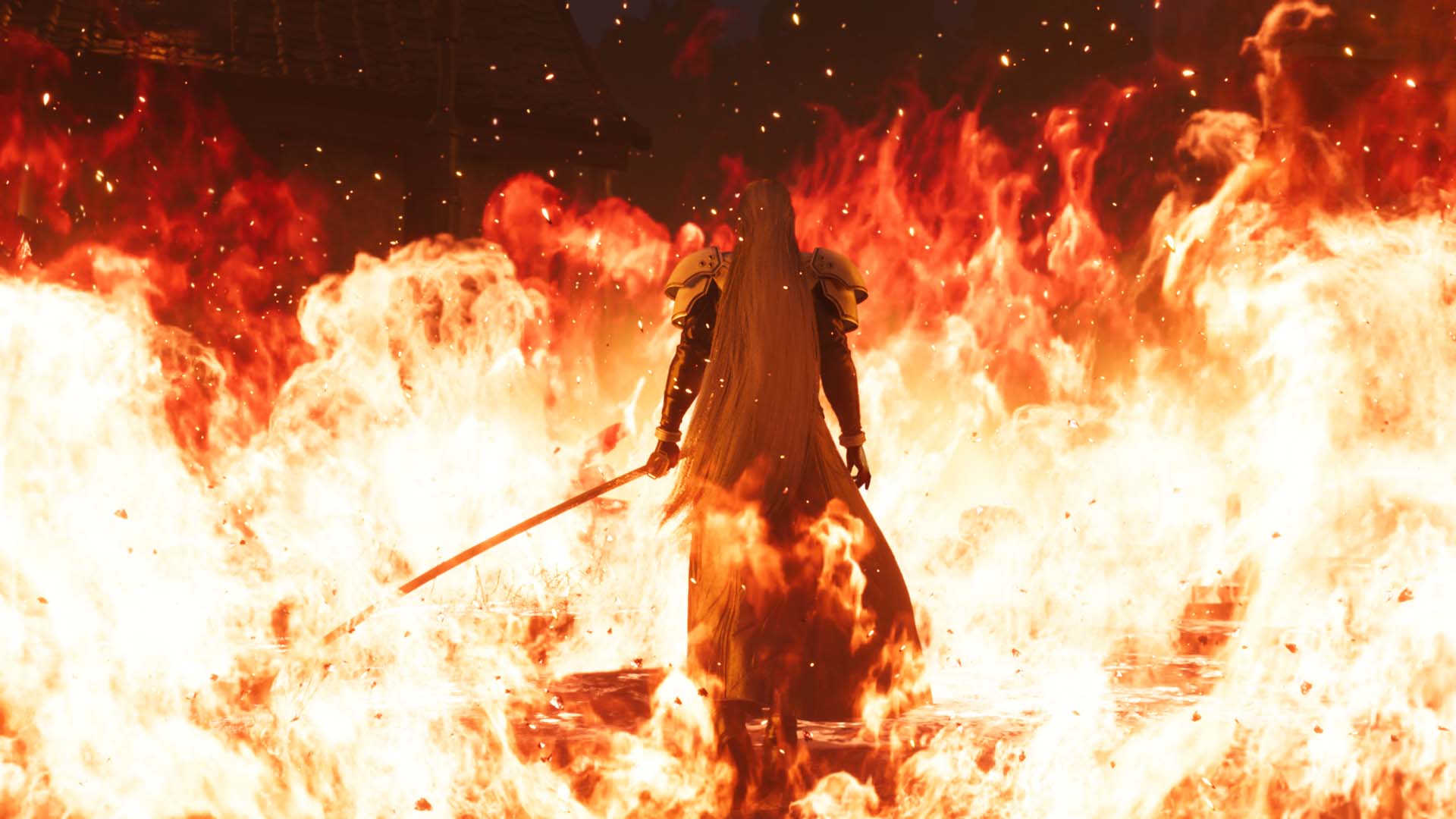
When Square Enix first revealed Final Fantasy 7 Remake, it did so with a warning: "The reunion at hand may bring joy, it may bring fear, but let us embrace whatever it brings." The developer was able to engineer all of those emotions throughout its 2020 RPG, breathing more focus and depth into Midgar before delivering an all-new ending – all of it giving Final Fantasy 7 Rebirth license to veer further from the original story. Remake may have begun with the familiar sight of a train pulling into a dystopian city, but Rebirth starts with the freedom to go off the rails.
While a sense of 'will they, won't they' is present throughout, ensuring nothing becomes too predictable, Final Fantasy 7 Rebirth closely follows what Remake first outlines. The first two entries in the trilogy are alike in attempting to faithfully modernize the source material into the best version of itself, although here an additional side narrative is picked up that continues to provoke pause as we walk down a well-trodden road.
One of the winners of Final Fantasy 7 Rebirth's approach to elevating the source material is the flashback to Nibelheim. In the original 1997 adventure, this location was a key, albeit sparsely populated area – iconic too, with Square Enix bringing it back for everything from a 2005 anime to spin-off action-RPG Crisis Core. For Rebirth, it's bigger than ever. Killing time by wandering through the town has been expanded beyond a reunion with Cloud's mother or playing Tifa's piano, as characters hidden among the backdrop of the original now come forward to play a bigger part in the story of their town. Cloud and Sephiroth also come better realized in the sort of cutscene animation and voice acting that wasn't possible 27 years ago – their initial carefree, warm demeanor contributing to a lingering sense of slow-burning dread that betters the story payoff. This isn't a joyful reunion; it's the story of how a once-celebrated hero lost their way. Not everyone will be delighted to see the return of Remake's button prompts in dramatic cutscenes, though it's a minor blip on the whole.

Final Fantasy 7 Rebirth closely follows what Remake first outlines
The historical elements better preserved in Final Fantasy 7 Rebirth follow Nibelheim's lead in finding a way to go bigger while retaining the original's spirit and soul. Costa del Sol feels like a quirky paradise unaware of The Planet's many ills. The Gold Saucer embraces and expands on FF7's mini-game offering to ensure you feel like a toy box has been expanded into a vault. Cosmo Canyon takes the same modern leap as Nibelheim to ensure that every one of Red 13's emotional beats land harder than before. Be it a stage for Rebirth's camper or serious moments, each locale succeeds because it elevates what the RPG's beloved cast goes through in the moment.
One of the more divisive ways Final Fantasy 7 Remake approached the original's legacy was to add new story elements, a way to cast doubt on where the road ahead would ultimately lead. Remake saw the brings that hold fate – the original storyline, in this case – vanquished, whereas Final Fantasy 7 Rebirth delves into the ramifications of this decision. A character once declared dead lives, heroes go missing, and other protagonists don't survive close calls that they did once before. Rebirth has those ramifications play out independently of story moments like the Nibelheim flashback for the most part, though the odd intersection does occur, leading to additional layers that won't delight everyone. Rebirth asks plenty of questions we'll be left to ponder while we await Part 3, though people who found their inclusion in Remake convoluted are unlikely to change their tune here.
Catch me outside
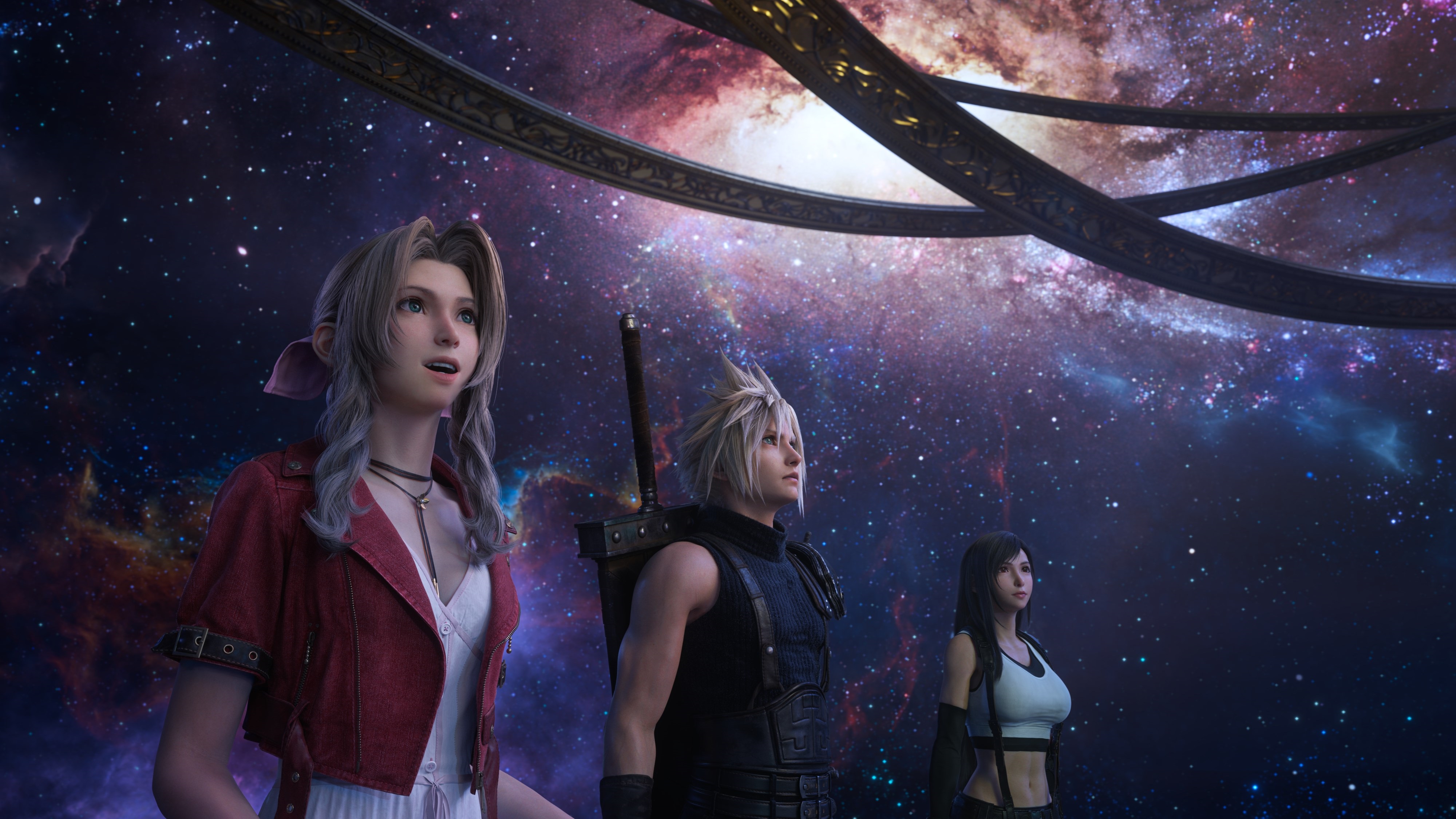
Just as the original Nibelheim Flashback did for the classic RPG 27 years ago, Final Fantasy 7 Rebirth's opener sets the tone for what's to come. Sephiroth's delusions and cruelty risk putting others in harm's way, so we're going to travel across the globe to discover his plan so we might stop him. Here, though, the adventure is grander than ever, as all the pit stops like Costa del Col and optional areas like Gongaga on the way to the Forgotten Capital are elevated alongside the main cities into something fresh yet familiar.
Every zone you come across glistens with history to discover and odd jobs to complete that enrich your journey to see the main story to its conclusion. Challenge giver and Materia craftsman Chadley is back to send you after clusters of rare fiends that need beating under certain conditions; life springs that tell you more about the area and offer direction to progress quests; and Ubisoft-style towers point you toward where all of that can be found. Then there's the Chocobos, which differ per region as they each have an ability that helps you traverse the terrain to reach these tidbits. It offers each region a fresh environmental identity that challenges your sense for navigating.

What truly makes each vista worth exploring are the side-quests, which have undergone a grand renovation of sorts since Final Fantasy 7 Remake. Once MMO-style fetch quests that largely demanded you go somewhere and pick up some items, here there's a greater variety on offer. One quest tasks you with challenging various foes to Final Fantasy 7 Rebirth's new card game to win back one bartender's cherished card, while another sees you assume the toad debuff to engage in shenanigans to cheer up some kids. Even the quests that involve the fetching of an item have a degree of challenge, as you're often pointed to where they should be but not outright told, leaving you to access clues given and lean on your Chocobo's ability to sniff something out. Rebirth is more about what's over that hill rather than what's marked on the map in your hands.
It's not just the variety that helps the side content resonate, though. Taking time to help the locals builds the stories of the side characters who call the region home and rewards you with greater intimacy with your own party, as a companion always takes an interest in what's happening and is keen to help. The short jaunt to win that bartender's card back involves chatting with Tifa about her life doing the same profession back in Midgar, and it's one of the many quieter moments your comrades will reflect on their past, what we're going through, or where we're going. Final Fantasy 7 Rebirth can feel like going from setback to setback, though it's the moments of calm between spent doing the little things with your party that bond you.
Materia gains
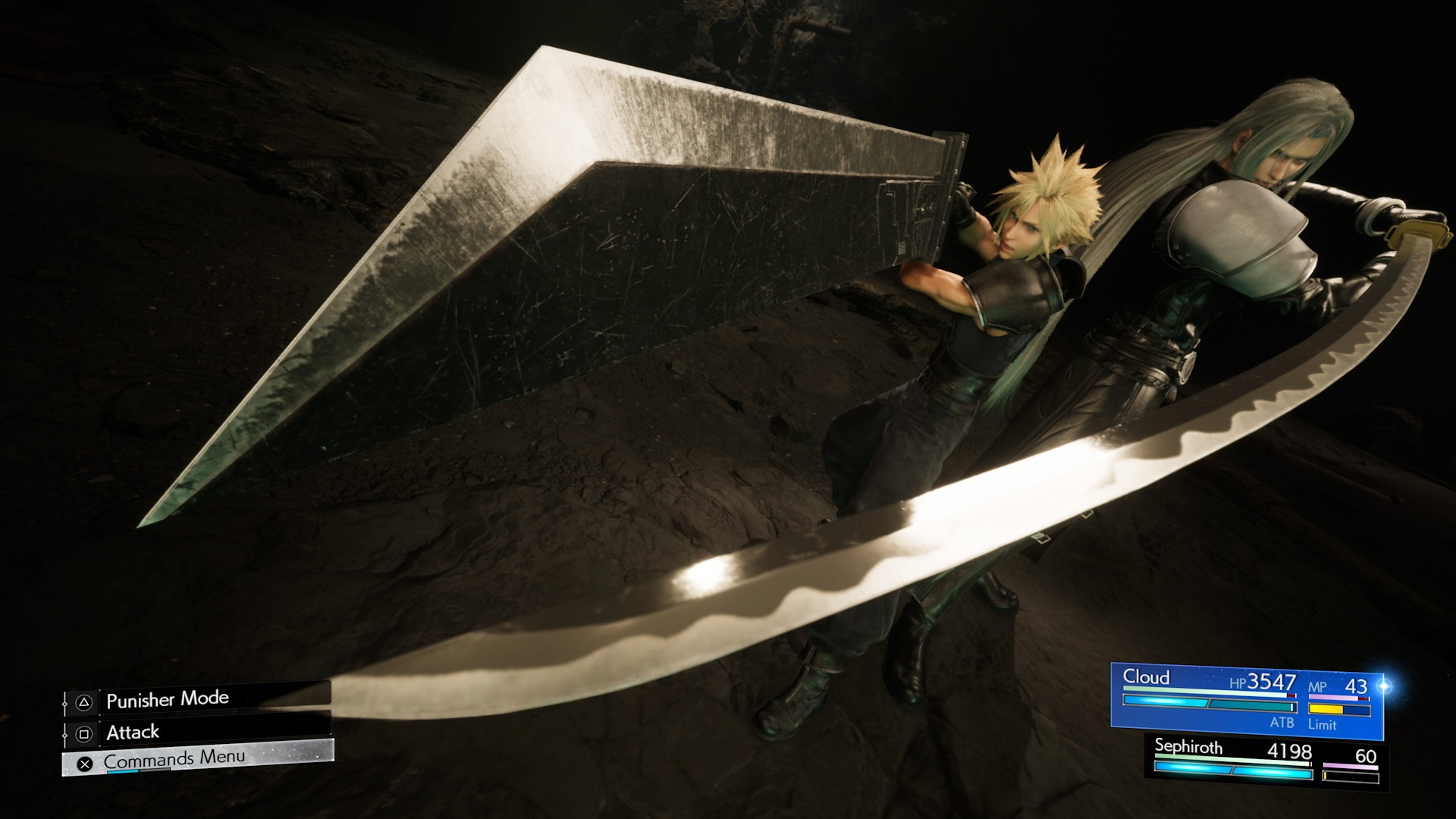
The reward for helping out goes beyond feeling closer to your team. The XP gathered feeds into a Final Fantasy 10-like Sphere Grid system that sees each party member offered a selection of new combo moves or stat buffs that might see them do more damage or gain more health points. And you'll need all of that as you face off against Final Fantasy 7 Rebirth's many fiends, who aren't afraid to give you a tough time if you haven't been leveling up outside of the main story.
As for combat itself, Final Fantasy 7 Rebirth doesn't mess with a good thing as it seeks to elevate rather than replace. Remake's combat was lauded as the series' most compelling hybrid of capturing what players enjoy about action games while retaining a sense of active turn-based heritage. You're still free to whack your opponent in various ways to fill a stagger meter while pausing for more tactical maneuvers – best utilizing whatever selection of Materia you've thrown together to cast magic to exploit a weakness or buff your party.
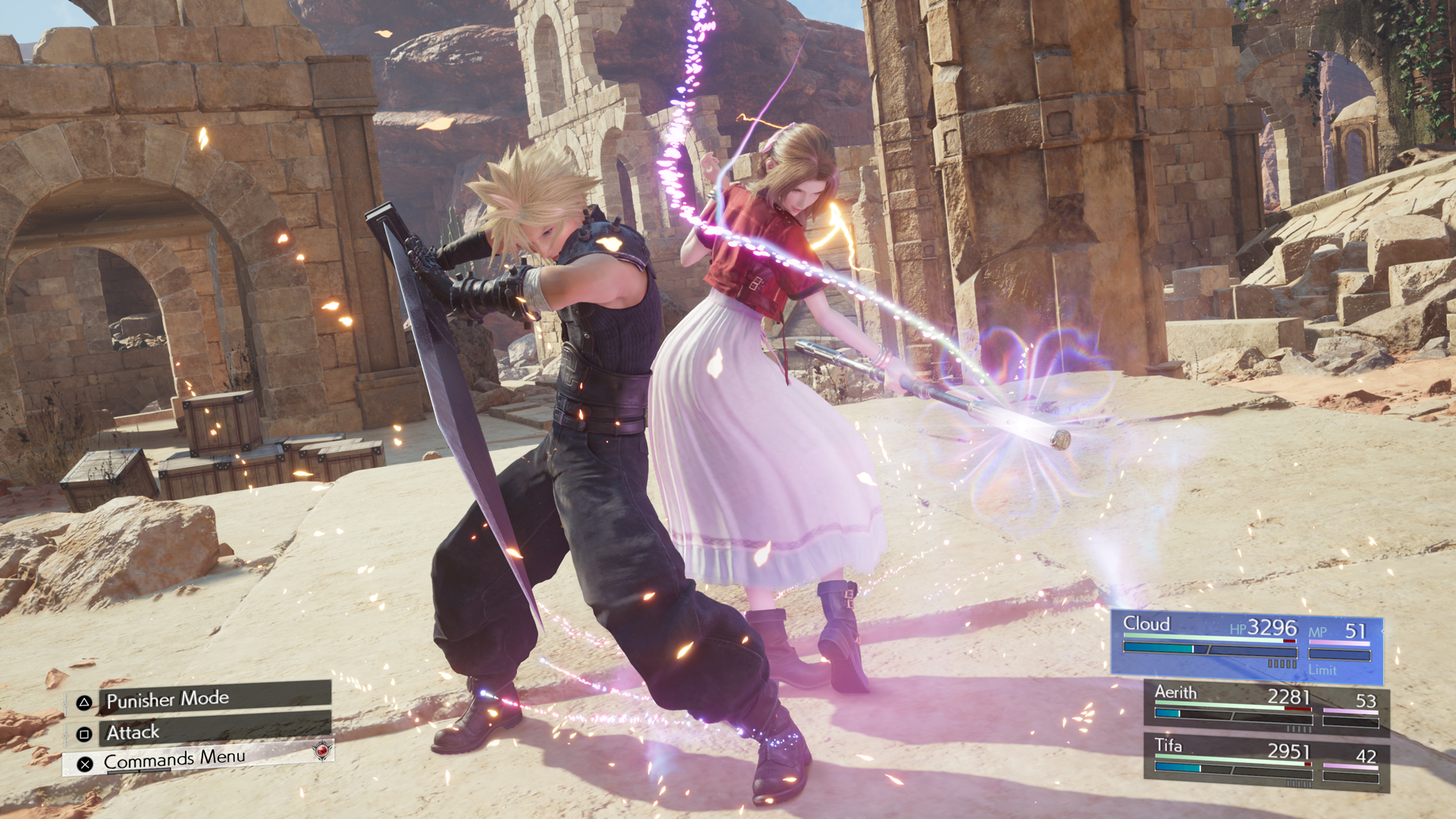
Alongside several tweaks to ensure combat feels smoother, the flashiest addition is the new Synergy ability system – a Chrono Trigger-like party-focused mechanic that allows heroes to team up and work cooperatively in battle. This represents the main evolution to the core combat rhythms, and directly reflects the wider story's focus on establishing the bonds between the party members. In the flow of a scrap, each move feels just as powerful as a Limit Break maneuver and takes just as much build-up. If you want two characters to team up, you'll need them both to pull off enough big moves individually to build up the reserves for them to combo. Not only do the array of flashy and often quirky moves reward taking time to do side quests, they give you more reason to swap characters midway to get the most tactical advantage. Like the child who plays Pokemon solely with their starter, some of my worst Final Fantasy 7 Remake habits involved solely playing as Cloud, and I'm glad Rebirth also beat that out of me.
Variety is another area where Final Fantasy 7 Rebirth improves upon its predecessor. Final Fantasy 7 Remake was overwrought with filler content, dungeons that add little to the overall story aside from a sense of distance between you and the next narrative beat. While Rebirth isn't entirely innocent of story padding, it's less noticeable and more enjoyable this time around. One dungeon raises an eyebrow as my party is sent hurtling down the pit of a cave that I have nearly reached the end of. Rather than simply make my way back up, though, I'm made to do so with a party of Barret and Red 13 as Cloud, Aerith, and Tifa become separated. Not only does Rebirth hold my attention better by forcing me away from my preferred party setup, but it also makes the most of the devotion the developers have to making each party member's playstyle feel unique. I am too stubborn to not roll with Cloud, Barett, and Aerith when given the chance, but I can't deny that Yuffie is fun to play as.
The spice of life
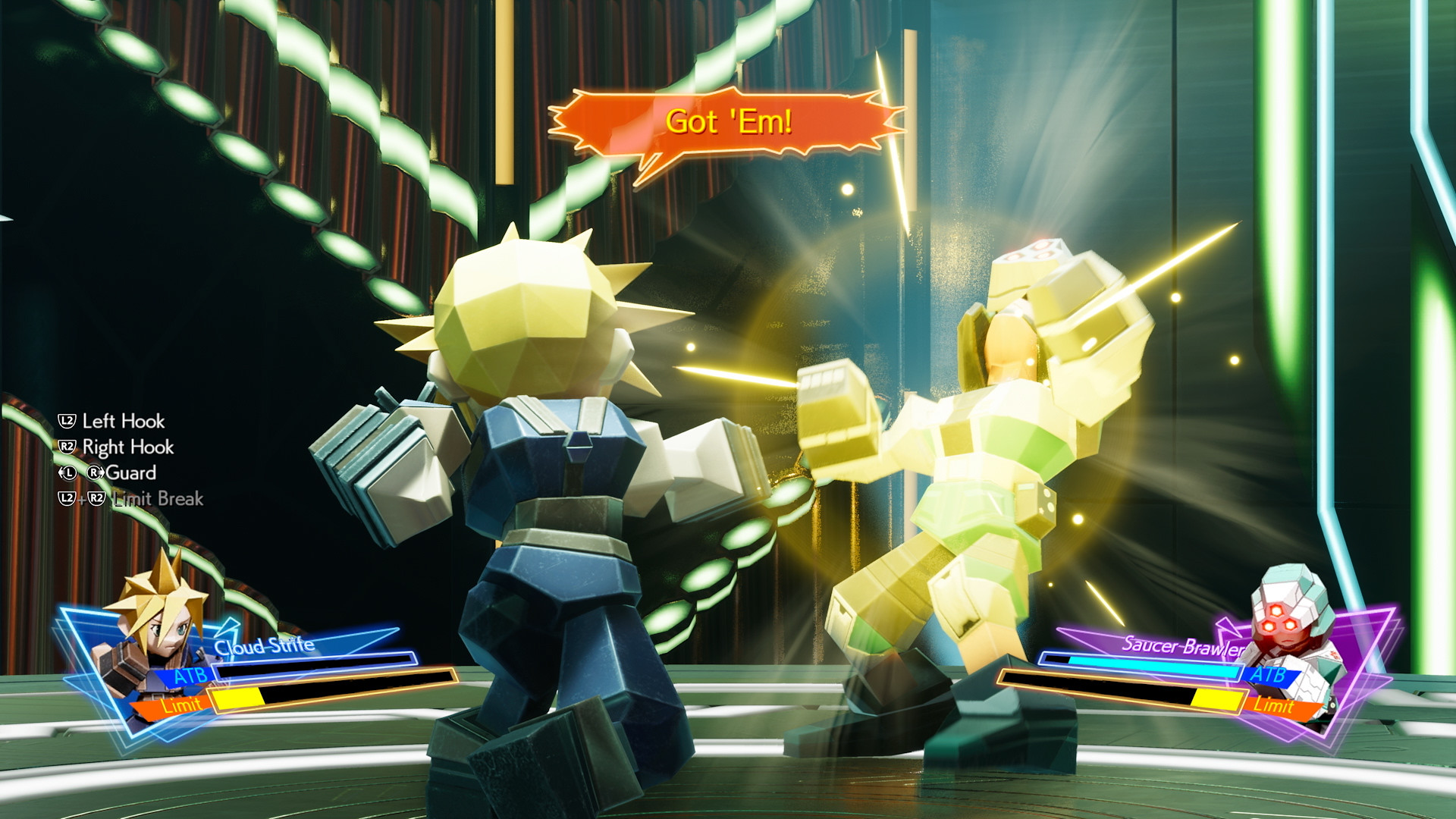
Some of the more endearing ways Final Fantasy 7 Rebirth's story seeks out variety is by embracing the campy splendor of the original experience. Rebirth sees Cloud rally a troop of soon-to-be pals to take part in a parade; the team enters a card tournament on a cruise, and everyone enjoys some downtime at Costa del Sol by trying their hand at the holiday resort's many activities. The main thread that runs through these activities is an abundance of refined mini-games, lovingly recreated here to ensure Rebirth maintains the joy of going through a toy box.
What really makes it all sing is the party's commitment to the bit. Final Fantasy 7 Rebirth isn't afraid to press pause on its more serious environmental themes to offer a moment of levity between friends. That isn't unlike the original, though here we have the benefit of some stellar chemistry brought about by the game's vocal talent bringing everyone to life.

Visiting the Gold Saucer sees the much-referenced play Loveless finally acted out, which you may recognize from Remake as something Jessie mentions starring in, or Crisis Core as antagonist Genisis can't stop quoting sections of it. Throwing a musical section into a beloved RPG may sound outlandish, but Final Fantasy 7 Rebirth makes it work by committing to it with plenty of heart. If there's anything that captures the original's spirit of being whatever it wants to be, it's certainly that.
The Gold Saucer stands as a testament to all of this. The grandiose theme park joins Midgar and Costa del Sol in representing a luxury that sits just outside many's reach, though watching your party's child-like joy at experiencing all the mini-games and gimmicks that have been taken up a notch is endearing – even Barret can't help but get sucked in. Final Fantasy 7's mini-games are one of the things people love about the original, and nowhere else are they more prominent than the Gold Saucer.
Most important, though, is date night, which sees Cloud spend time with one party member, be it Aerith, Tifa, or someone else. The original game set this motion based on certain dialogue decisions throughout the game, and Rebirth is much the same though the beloved event ties into the bonds you have with your party. Doing specific side quests related to them will strengthen your bond, though it also comes down to story decisions and dialogue selection at certain points throughout the game. The original moment resonates as it provides a moment of normalcy in an extraordinary adventure, and it hits just as hard here. Just don't neglect them, as you might be stood up.
Cloud nine
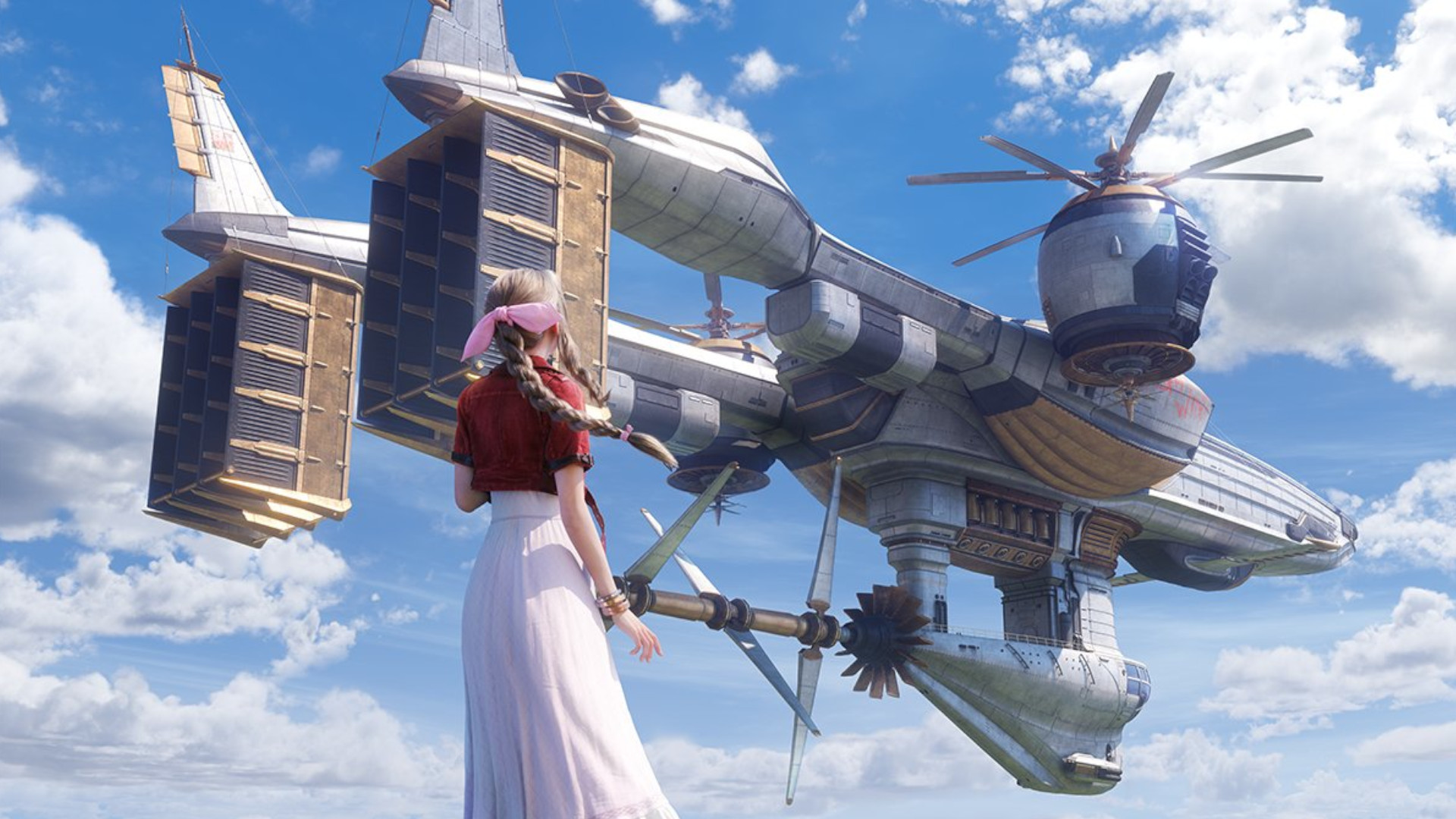
Among its many highs, Final Fantasy 7 Rebirth is the beloved RPG series at its best. Chemistry between characters continues to shine, improvements to side-content ensure that the original's step-out moment is one worth taking, and combat remains Square Enix's most compelling blend of modern action and active time battle heritage.
Turning the original Final Fantasy 7's middle portion into an entire game can provoke the feeling that great narrative progress isn't made, and new narrative elements are, at times, just as convoluted as they were in Final Fantasy 7 Remake. Still, it's a rare thing to see Square Enix make a direct sequel and it's been made to count here with a second act that meaningfully improves the past and charts a course for a final act that promises plenty of twists and turns. How to modernize Final Fantasy is a question Square Enix has long pondered, and the answer may well be found within Rebirth itself.







